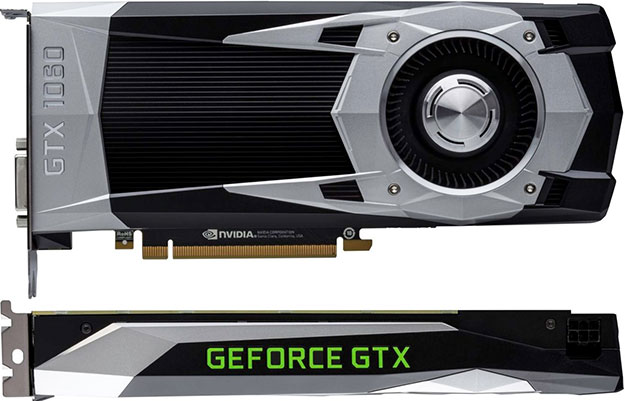NVIDIA Stealthily Launches GeForce GTX 1060 With 6GB GDDR5X To Counter AMD Polaris Refresh

NVIDIA is all about its GeForce RTX series with real-time ray tracing and DLSS support right now, but rumors of AMD getting ready to introduce a refreshed Polaris GPU may have prompted to the company to upgrade one of its Pascal parts. So far there has not been any official announcement or fanfare, but a visit to NVIDIA's GeForce GTX 1060 product page shows that some models are now shipping with GDDR5X memory.
For anyone keeping count, that now makes four different GeForce GTX 1060 models. They include a 3GB model that uses GDDR5 memory clocked at 8Gbps, the original GeForce GTX 1060 with 6GB of GDDR5 memory clocked at 8Gbps, a later revision of the 6GB model with the GDDR5 memory goosed to 9Gbps, and now a version of the 6GB card that uses potentially faster GDDR5X memory.
We say it's potentially faster and not definitively faster because the product page isn't entirely clear on that aspect. Have a look...

Source: NVIDIA
NVIDIA's specifications chart doesn't differentiate memory speeds between the GDDR5 and GDDR5X versions, and simply lists 8Gbps. However, that doesn't necessarily mean the GDDR5X variant will not be clocked a little faster, as NVIDIA doesn't differentiate between 8Gbps and 9Gbps GDDR5 variants either. It's all a little confusing at the moment.
Here's a handy bullet list to make things a little easier (visually):
- GeForce GTX 1060 3GB GDDR5 @ 8Gbps
- GeForce GTX 1060 6GB GDDR5 @ 8Gbps
- GeForce GTX 1060 6GB GDDR5 @ 9Gbps
- GeForce GTX 1060 6GB GDDR5X @ ???
All four variants shuttle data through a 192-bit memory pipe. We don't know what speed the GDDR5X memory is running at on the new GeForce GTX 1060 SKU, but a visit to Micron's website shows that it offers GDDR5X memory in 10Gbps, 11Gbps, and 12Gbps speeds.
For reference, NVIDIA's GeForce GTX 1080 originally shipped with 8GB of GDDR5X memory running at 10Gbps, then later gave its partners the option to select faster 11Gbps GDDRX memory. So, what does this tell us about the GeForce GTX 1060 with GDDR5X memory? Let's do some math. To calculate memory bandwidth, you divide the memory interface width (192-bit) by 8, then multiply the result with the memory clock frequency.
- 192 / 8 = 24. 24 x 10,000 = 240,000 (240GB/s)
- 192 / 8 = 24. 24 x 11,000 = 264,000 (264GB/s)
- 192 / 8 = 24. 24 x 12,000 = 288,000 (288GB/s)
So there are the three possibilities. For reference, the original GeForce GTX 1060 has a memory bandwidth of 192GB/s, and the 9Gbps variant has a memory bandwidth of 216GB/s.
That's a lot to digest. To the point, the more memory bandwidth, the better. It's especially helpful for running games at higher resolutions, and can enable a higher level of detail, depending on the game. If GeForce GTX 1060 cards with GDDR5X memory cost around the same as the GDDR5 variants, then it becomes an even better bang-for-buck option.

